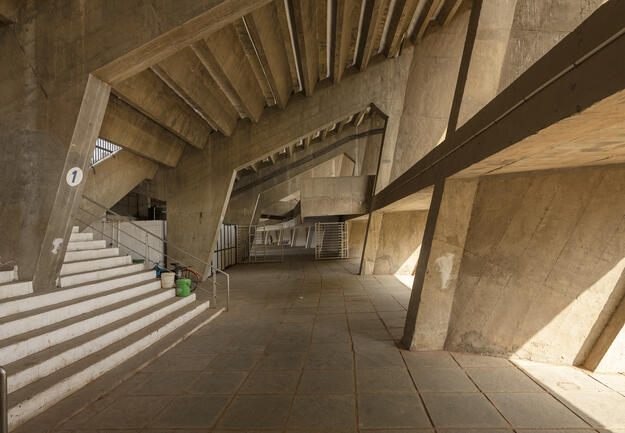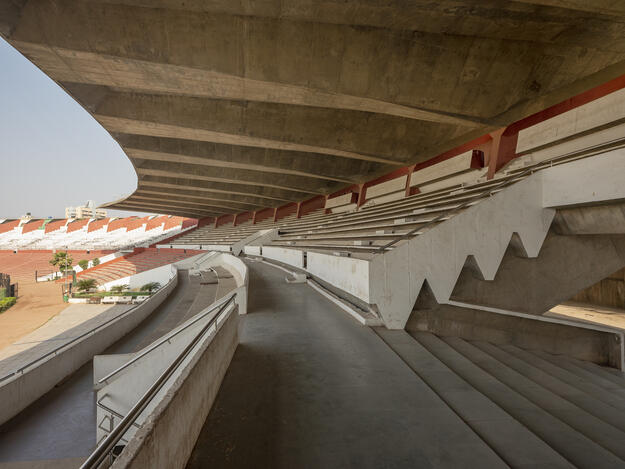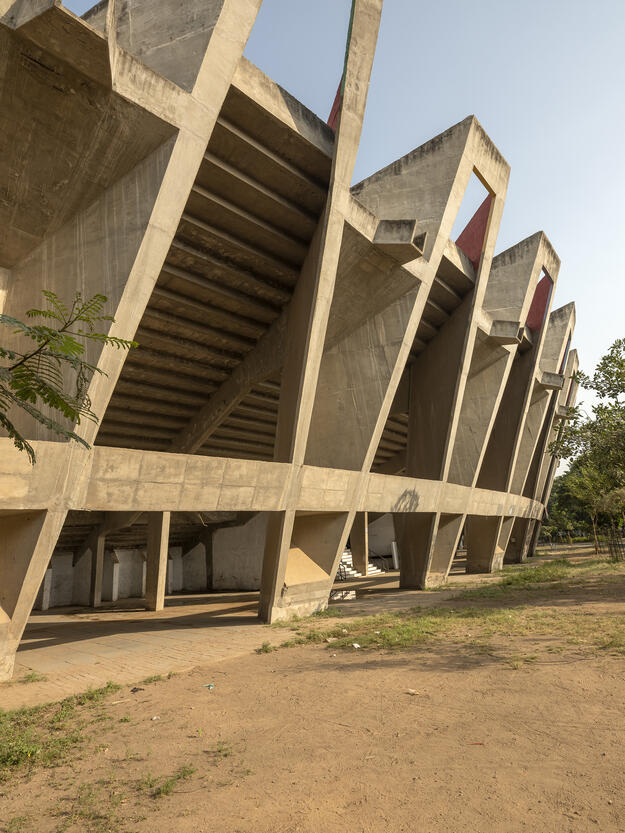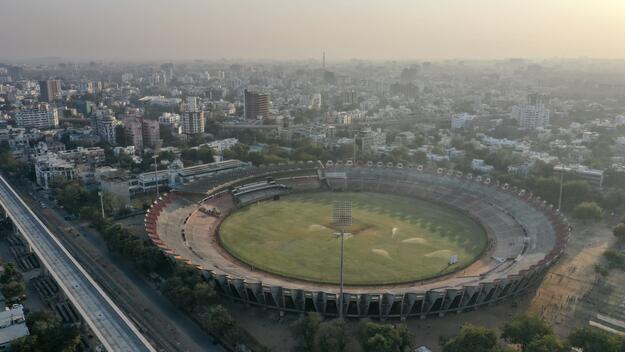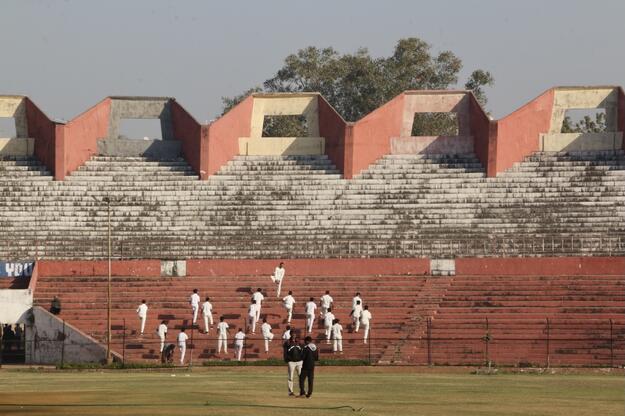Sardar Vallabhbhai Patel Stadium
Site and Significance
Creating a New Architectural Language in India
The Sardar Vallabhbhai Patel Stadium, located in the heart of Ahmedabad, represents the progressive ideals and experimental spirit that characterized India’s post-independence period. Designed in the 1960s by renowned architect Charles Correa and engineer Mahendra Raj, the stadium is part of a larger constellation of structures built in Ahmedabad by a generation of local and international architects who helped create a new architectural language in India. This collection of buildings illustrates the cultural and economic importance of Ahmedabad following partition of the State of Bombay in the 1960s.
An Important Local Recreational Hub
The stadium was originally built to host international cricket matches, including the first ever One Day International match in 1981, but it later became a regular venue for India’s domestic cricket season after a nearby stadium was constructed in 1982. Sardar Vallabhbhai Patel Stadium is open to the public and has become an important recreational hub for the local community, who use it for recreation and as an event space for local schools. The stadium has become a unique resource for quality open space in a country where urban encroachment is increasing every day.
Although it is situated in the heart of the city and is used daily by a large number of people, the stadium has suffered significant physical degradation as a result of decades of poor maintenance and lack of funding. Recognition as a cultural heritage site would ensure its protection and prevent potential loss.
Our Involvement
2020 World Monuments Watch
The Sardar Vallabhbhai Patel Stadium was included on the 2020 World Monuments Watch to draw attention to the complex challenges of preserving not only an iconic twentieth-century modern structure, but an emblematic public space for the people of Ahmedabad. Inclusion on the watch also sought to encourage a conservation management plan including the communities who support and benefit from the building.
In July 2020, the Getty Foundation announced that Patel Stadium was one of 13 significant twentieth-century buildings that would receive a total of $2.2 million in Keeping It Modern grants. With Getty support, WMF specialists from both the U.S. and India are collaborating with a team of local experts to create a detailed plan to conserve the site and enhance its value as a green space for the local community to enjoy.
Crafting a Comprehensive Conservation Management Plan
Following the Getty Foundation’s announcement, WMF launched a project to create a Comprehensive Conservation Management Plan (CCMP) for Patel Stadium in partnership with the Amdavad Municipal Corporation (AMC) and the National Centre for Safety of Heritage Structures, Department of Civil Engineering at the Indian Institute of Technology Madras (IIT Madras). The plan was designed to serve three objectives: provide the basis for the site’s successful conservation so that it can serve as a vibrant, valued, self-sustaining community hub; offer an exemplary model for good conservation practices and creative adaptive reuse ideas for other modernist concrete structures in Ahmedabad; and create a wider understanding and appreciation of the cultural, historical, architectural, engineering, and social significance of India’s modernist architecture.
Throughout 2020 and 2021, WMF, AMC, and IIT Madras conducted documentation, research, site condition assessments, and consultation workshops, stakeholder analyses to support these objectives. The CCMP was finalized in 2022.
Google Arts & Culture
To learn more about Patel Stadium, visit our immersive Google Arts & Culture exhibit here.
Learn More
World Monuments Fund safeguards cultural heritage around the globe, ensuring our treasured places are preserved for present and future generations.
Sign up for our newsletter to receive regular updates on our projects, stories from the field, upcoming events, and more!
![]()
World Monuments Fund’s work at Sardar Vallabhbhai Patel Stadium has been made possible, in part, by support from the Getty Foundation.

